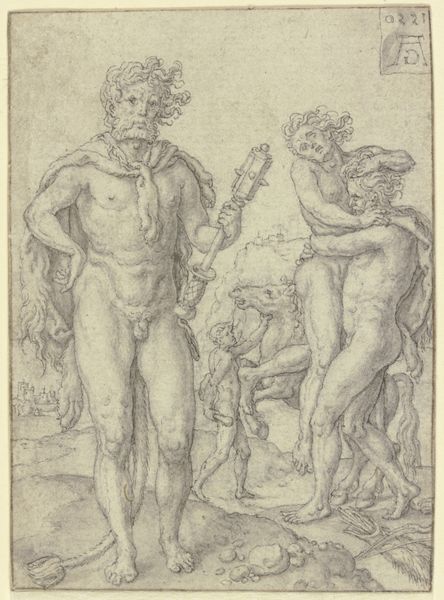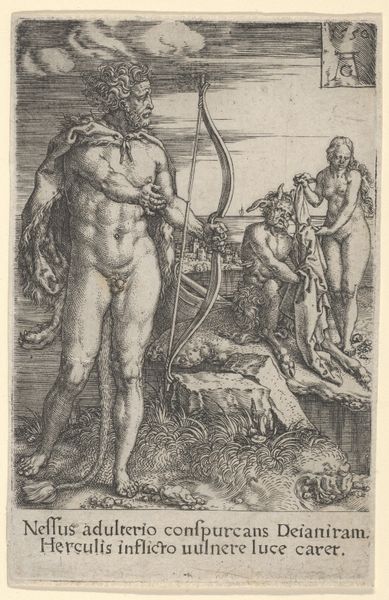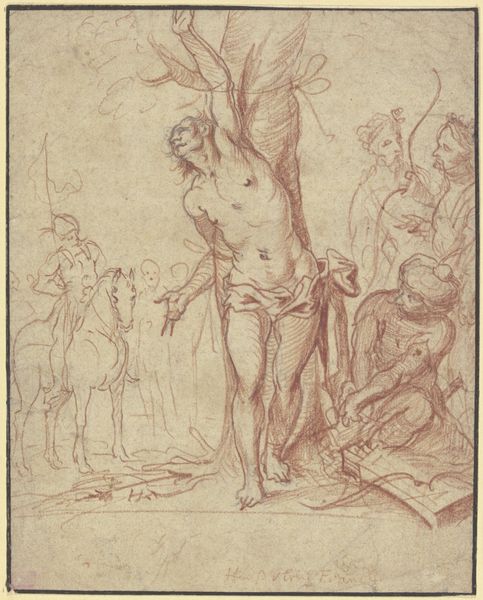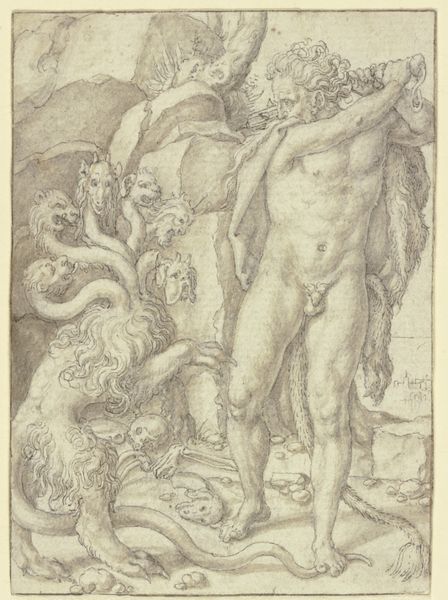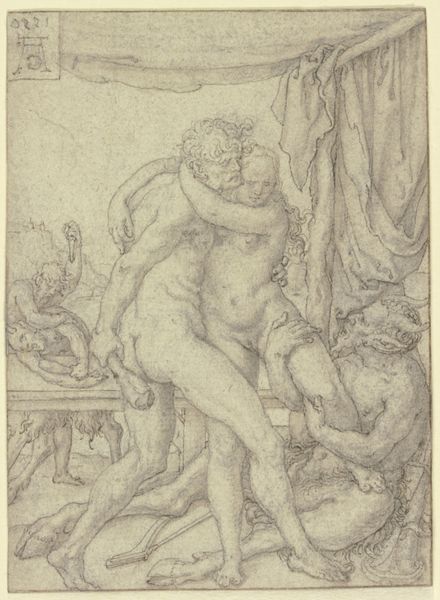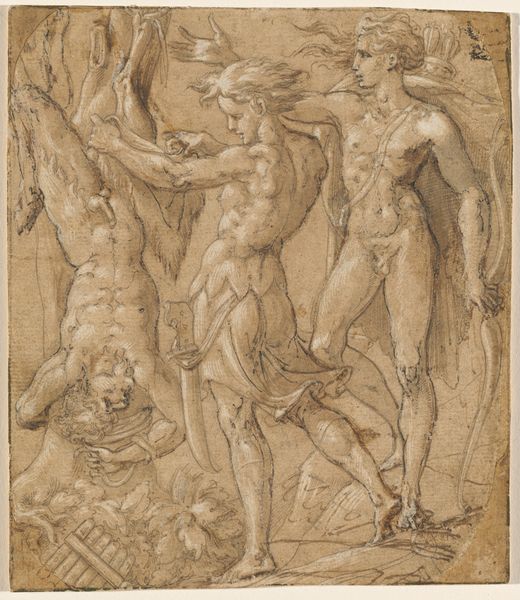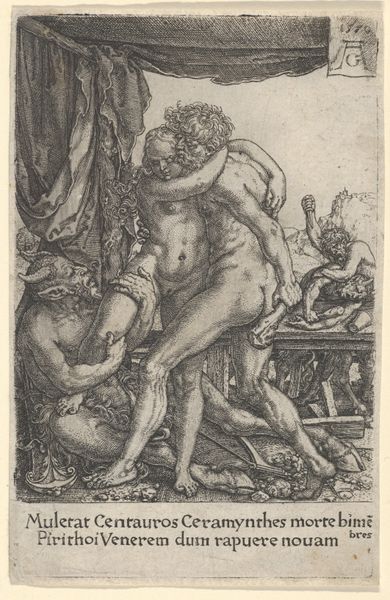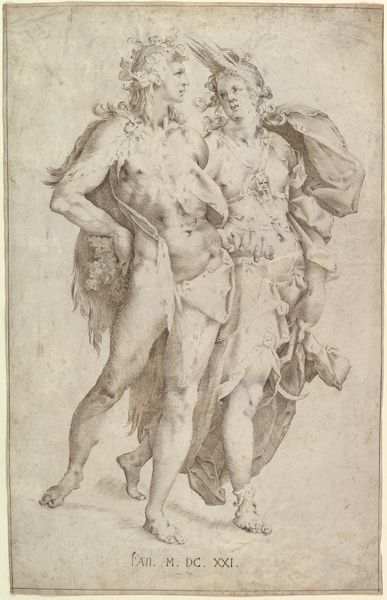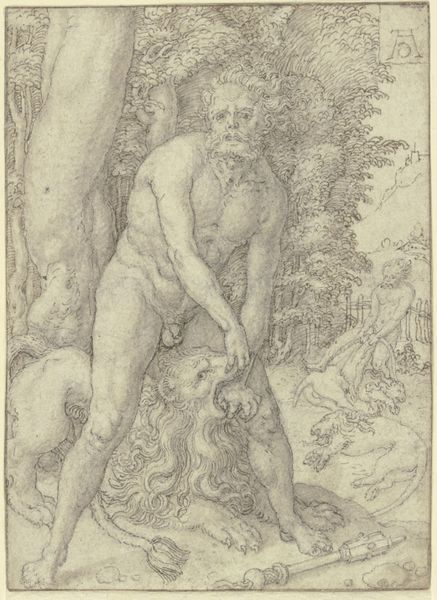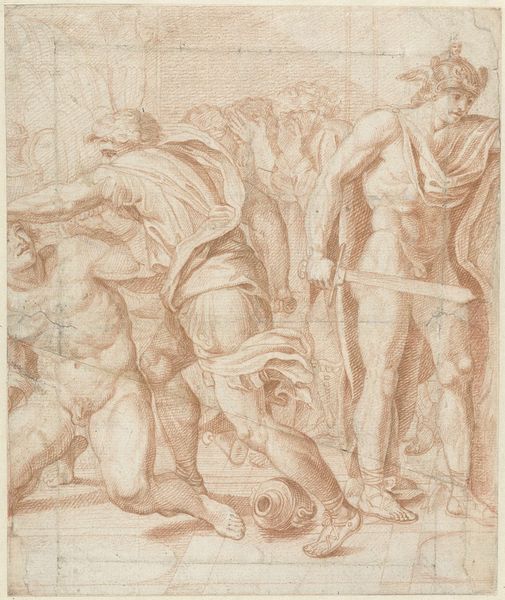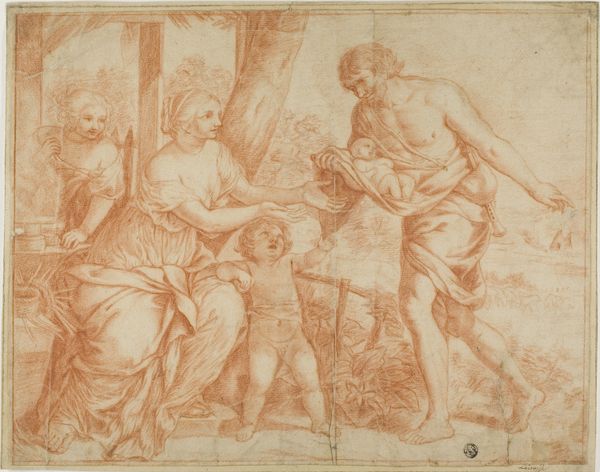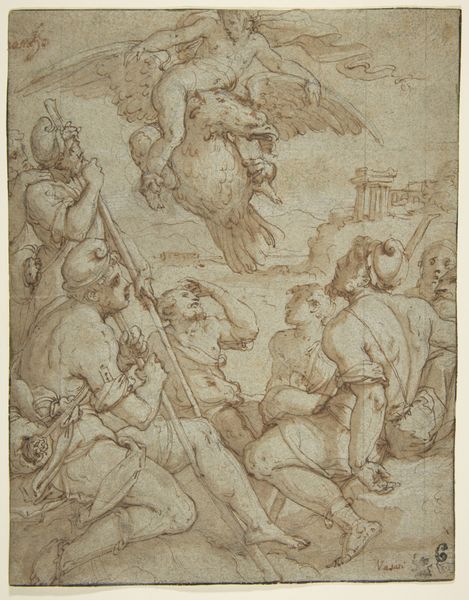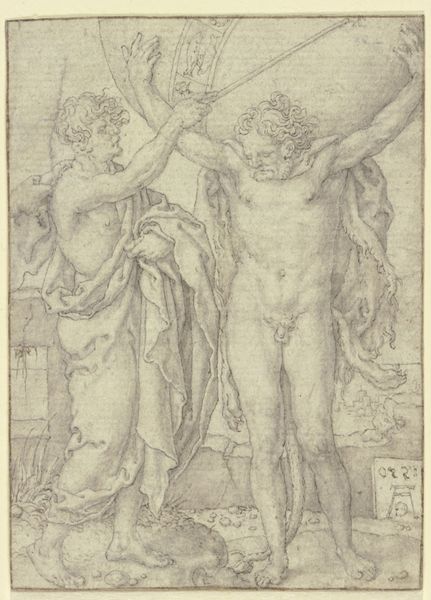
drawing, ink, indian-ink, chalk
#
drawing
#
toned paper
#
light pencil work
#
pen sketch
#
pencil sketch
#
11_renaissance
#
personal sketchbook
#
ink
#
ink drawing experimentation
#
indian-ink
#
pen-ink sketch
#
13_16th-century
#
chalk
#
sketchbook drawing
#
sketchbook art
#
fantasy sketch
Copyright: Public Domain
Curator: I find myself drawn to the dynamism in this sketch; it’s like catching a glimpse of a dramatic episode frozen in time. Editor: Indeed. This is Heinrich Aldegrever’s drawing, “Hercules Kills Nessus,” created around 1550. It's rendered in ink and chalk on toned paper, offering a complex interplay of light and shadow that really animates the scene. Curator: Light and shadow certainly plays an important role in how the drama unfolds here, though I also notice the mythological subject matter itself and am made to think of representations of power. Looking at Hercules, the hypermasculine figure on the right, how do you interpret the narrative being presented? Editor: Well, structurally, you've got Hercules, centrally positioned, poised for action, and then there is Nessus, with the woman off to the side, the figures forming this carefully balanced triangle that really emphasizes Hercules’s power. The medium seems well suited for expressing narrative drive and dramatic form here, wouldn't you say? Curator: It is a masterful compositional choice that directs our attention to Hercules. Yet, it's crucial to look beyond the classical heroic narrative here. Consider Nessus’s perspective: a centaur, a hybrid creature, often depicted as a figure of uncontrolled lust, being slain for an attempted abduction. There is something potent here concerning marginalized groups. How power operates, who gets to write history—or in this case, draw it— these themes become really palpable through Aldegrever's work. Editor: I do see that. But let's return to Aldegrever's technique. The ink lines define the contours of the bodies with such precision while the chalk work creates a softer modelling, adding depth to the musculature. It’s not just about representation; it’s about the exploration of form. Curator: It is the tension between Hercules, Nessus, and Deianira that tells of ancient Greek myths that were written and performed from particular political and social positions; through repeated retellings, certain elements—such as this victory of ‘good’ over ‘evil’—have solidified over time in our contemporary imagination, in part because of how compelling works like these remain! Editor: This examination has broadened my own viewing. Appreciating it purely formally has always appealed to me but, thinking more broadly, now the real strength of this drawing lies in the rich interaction of form and context. Curator: Agreed. Art allows us to reimagine inherited assumptions while critically engaging with histories and social structures. A beautiful paradox, wouldn't you agree?
Comments
No comments
Be the first to comment and join the conversation on the ultimate creative platform.
